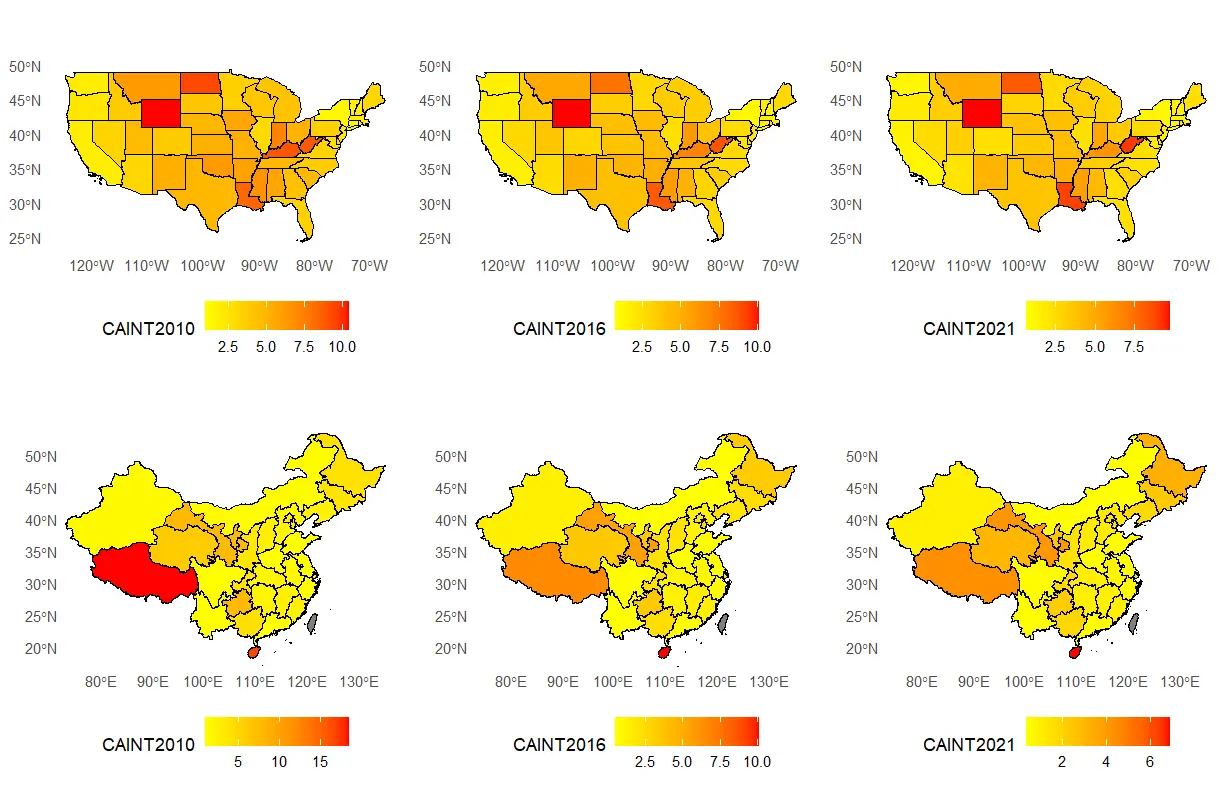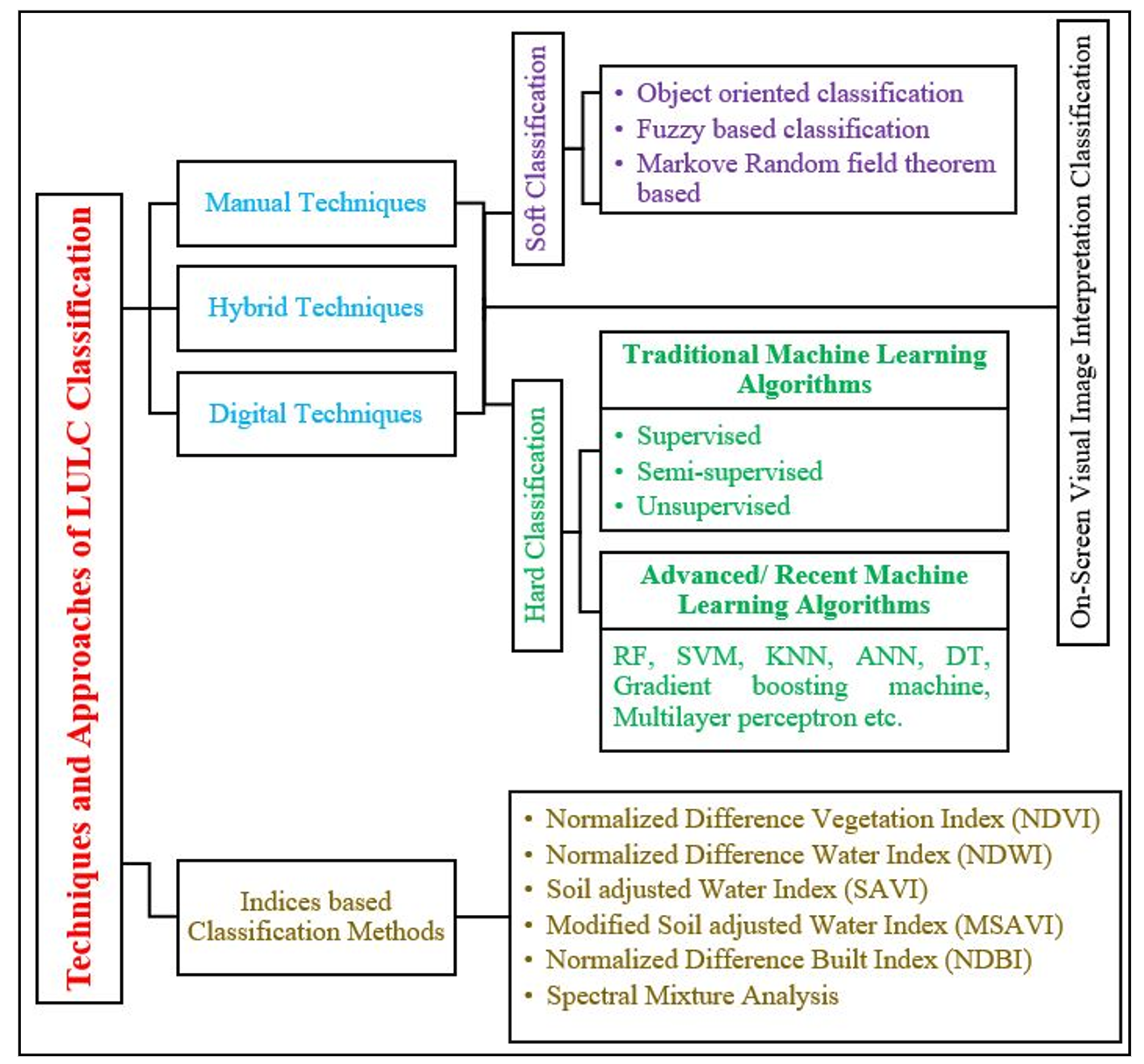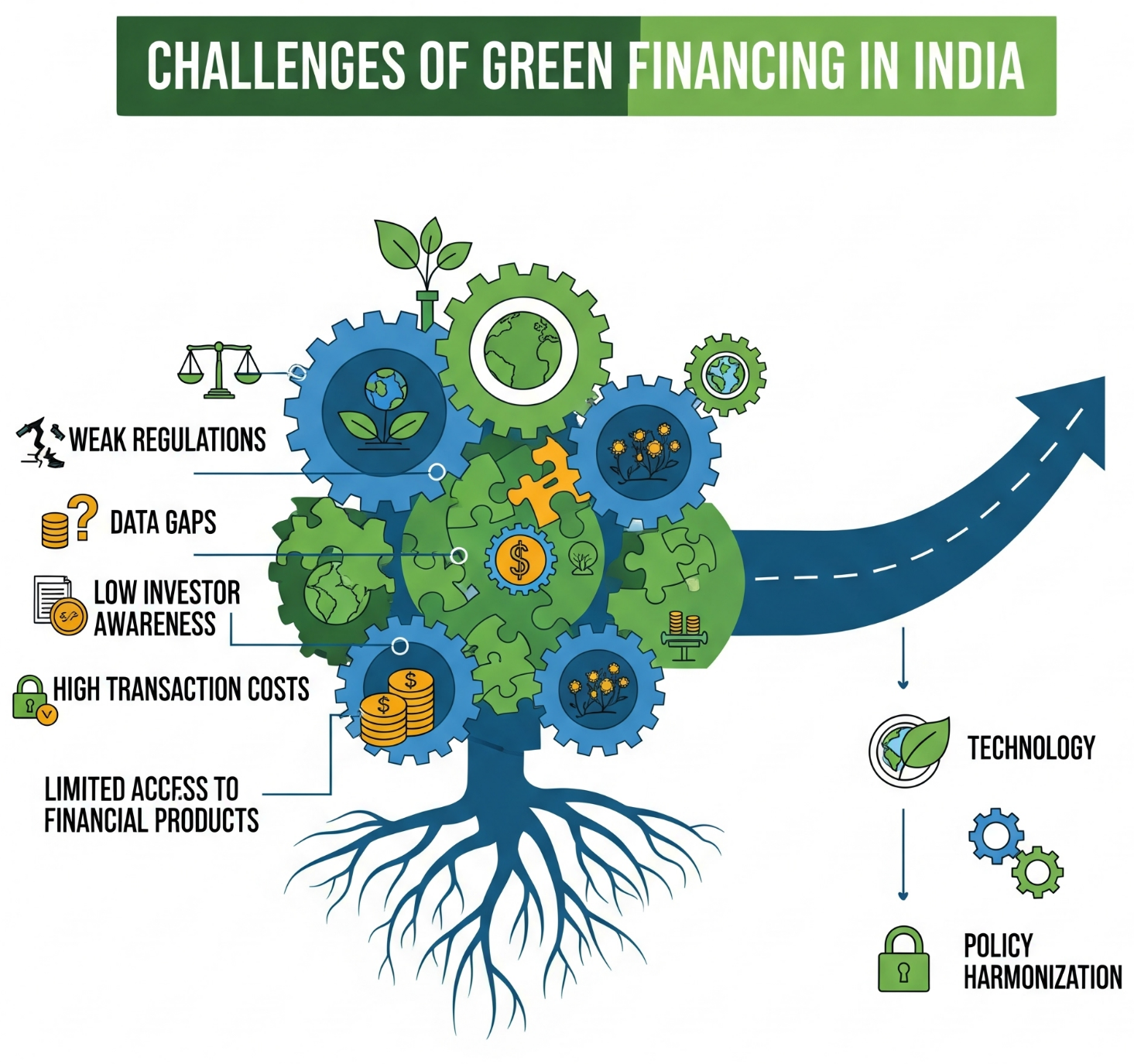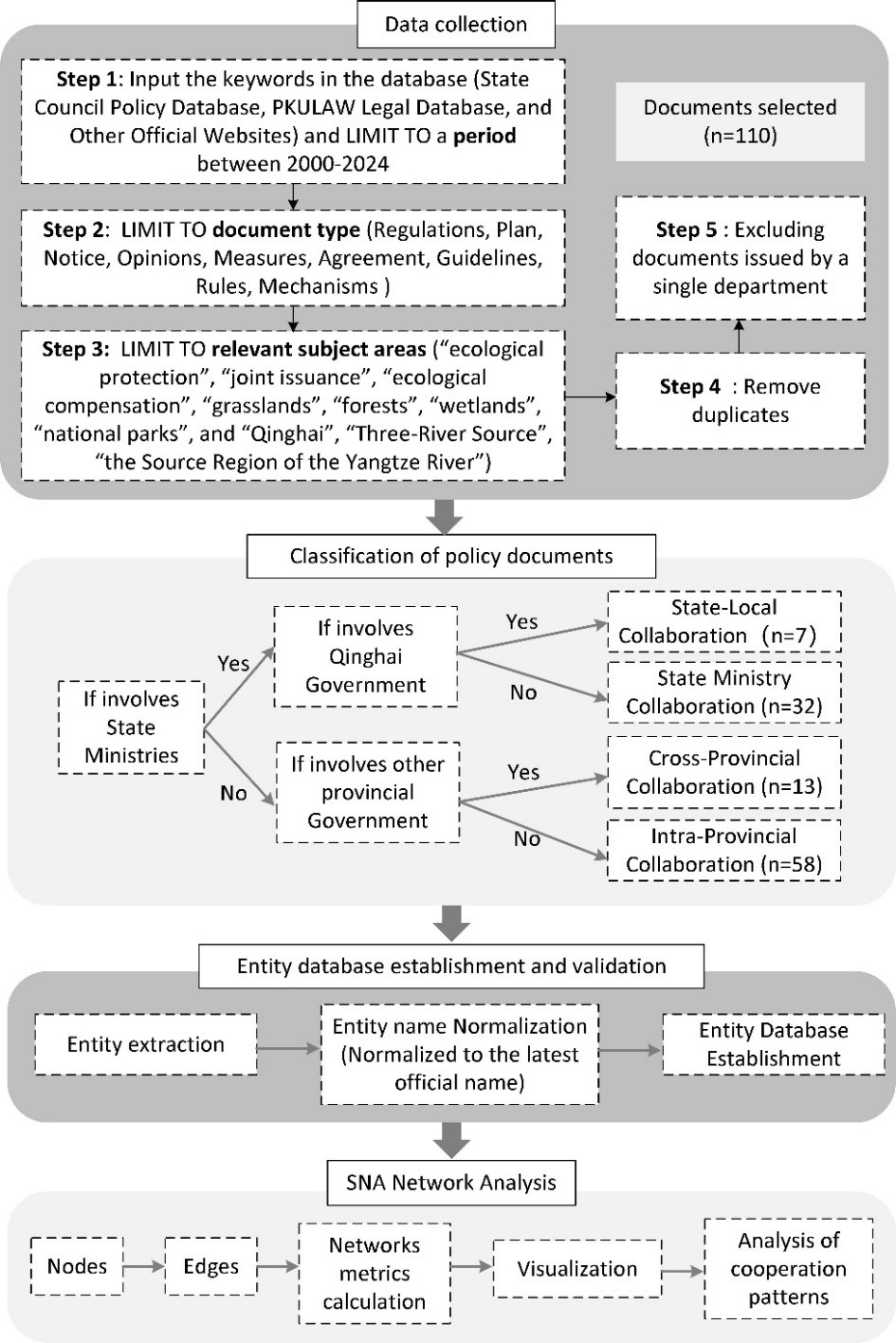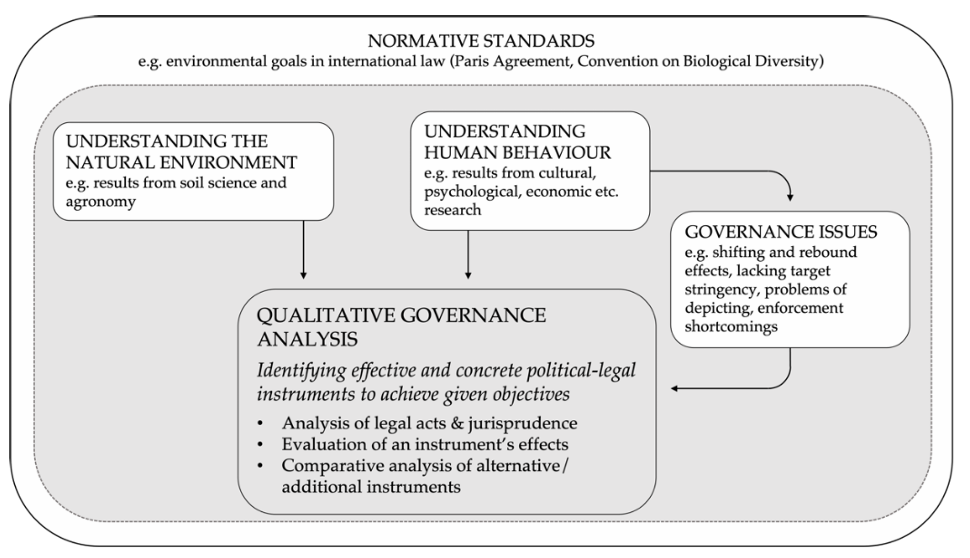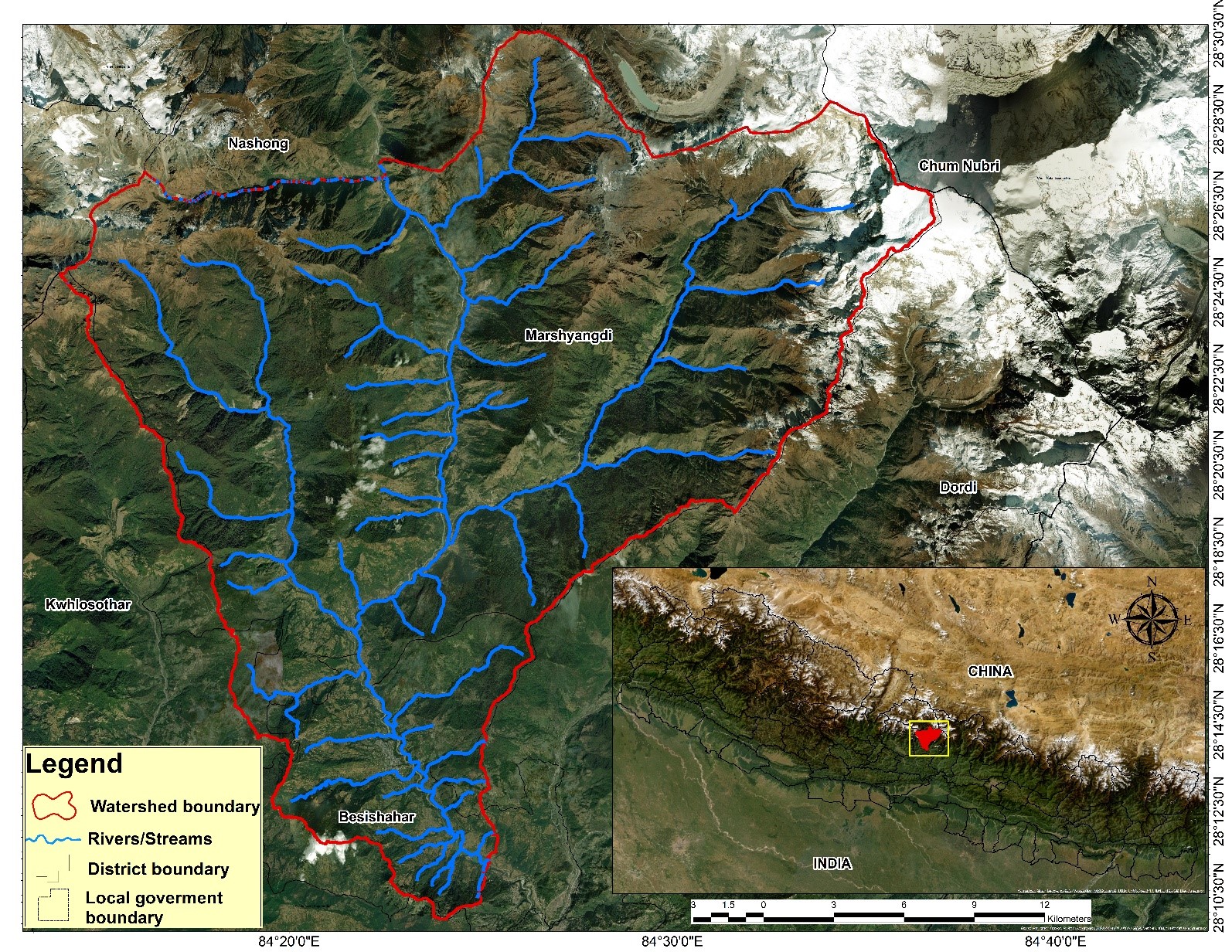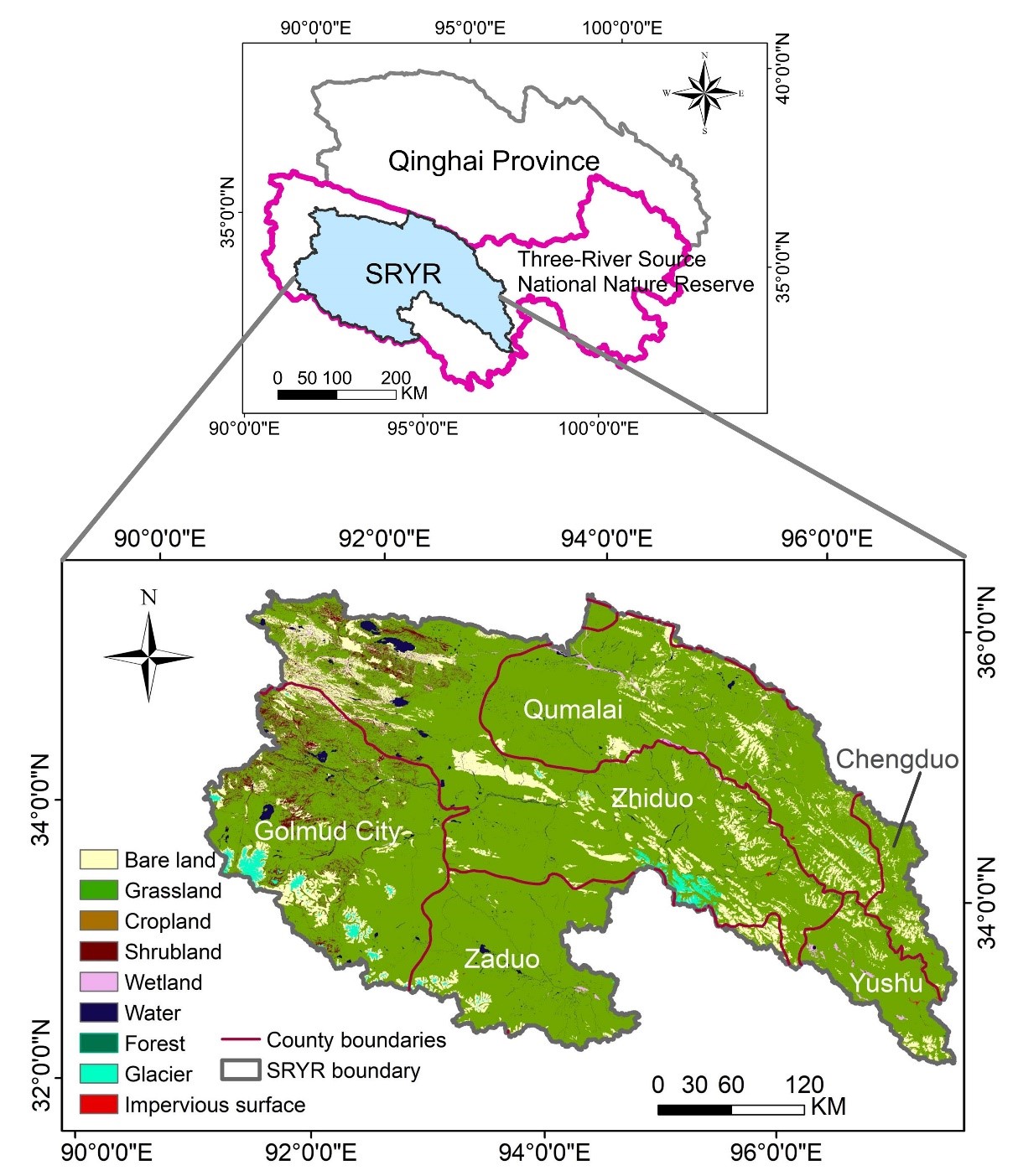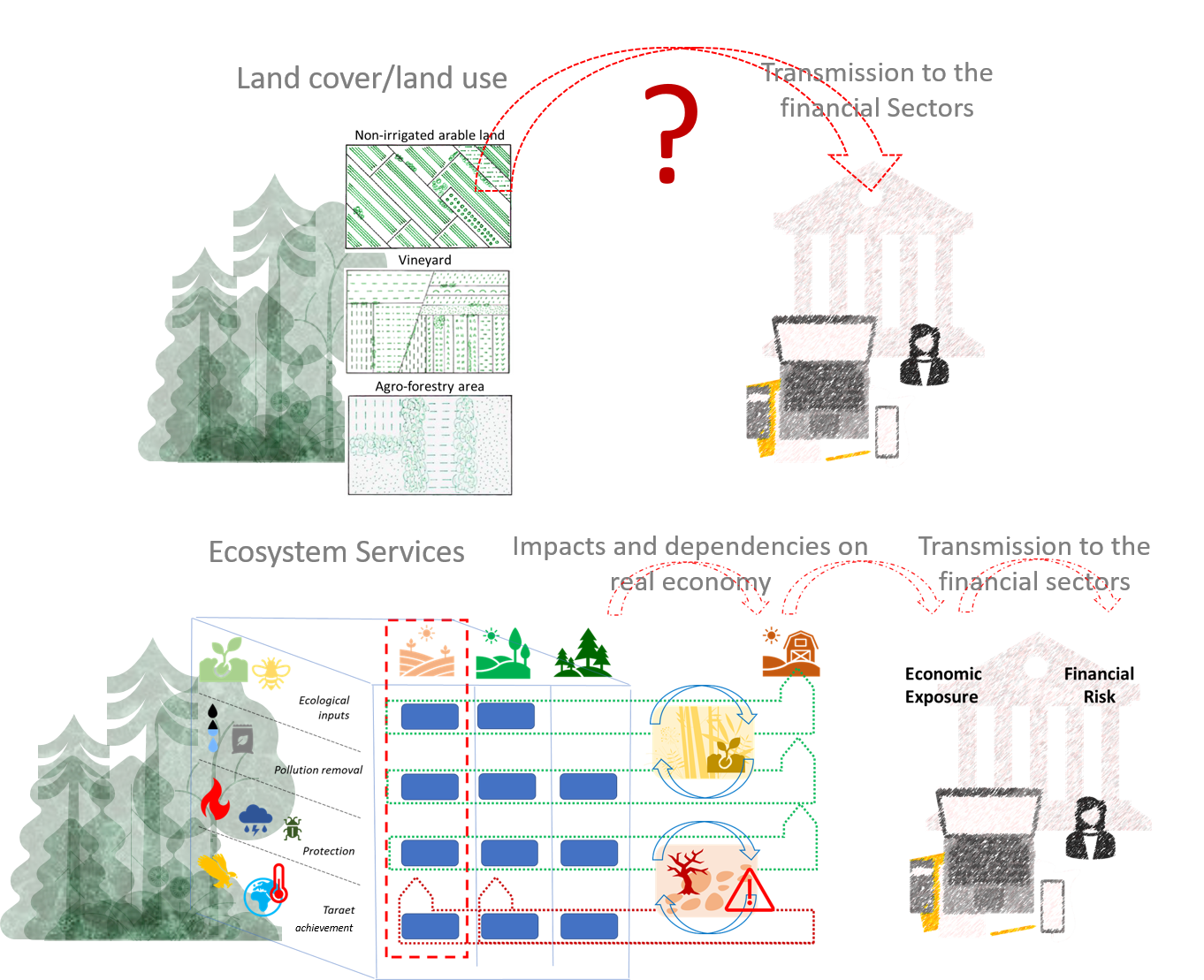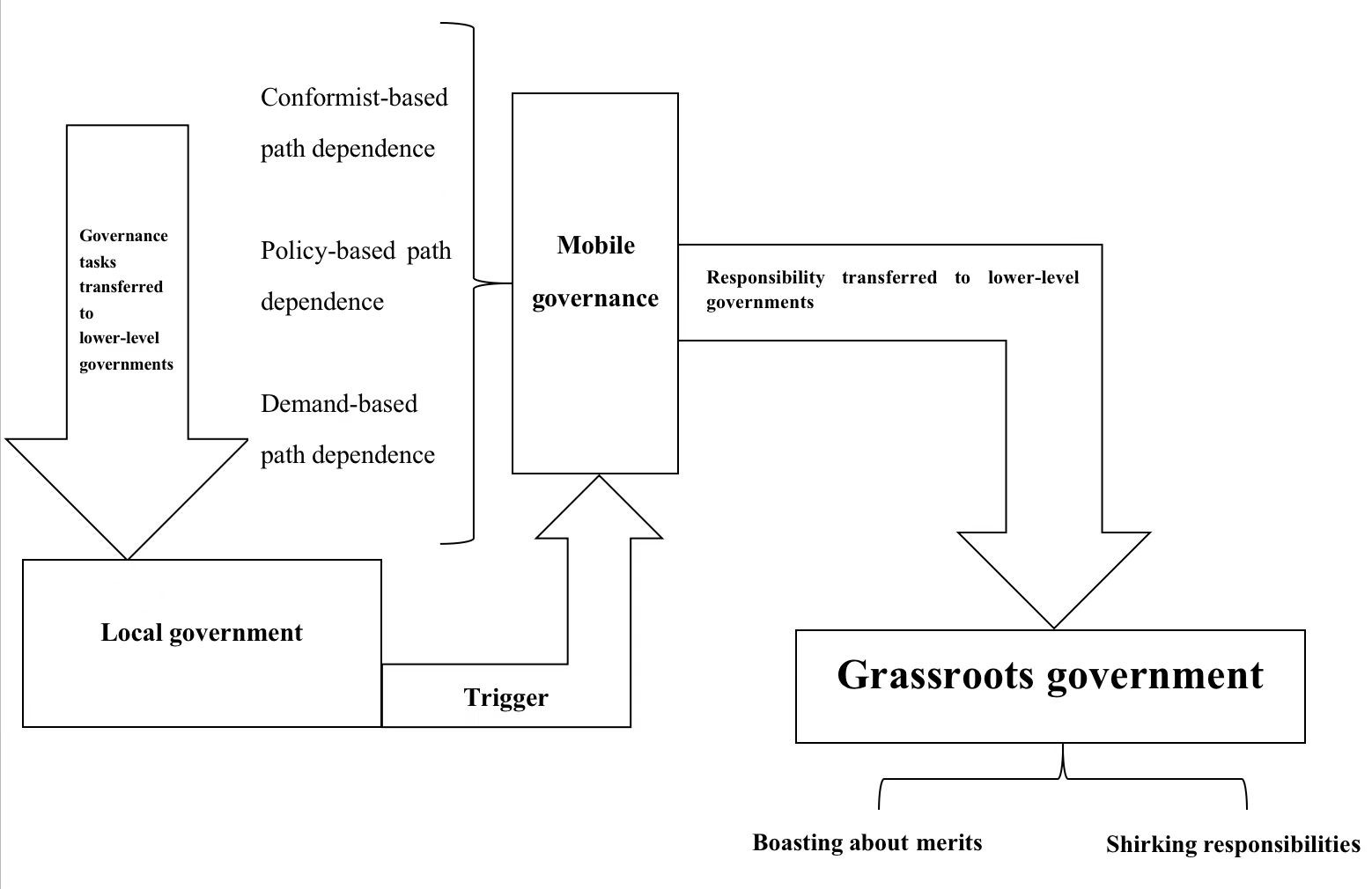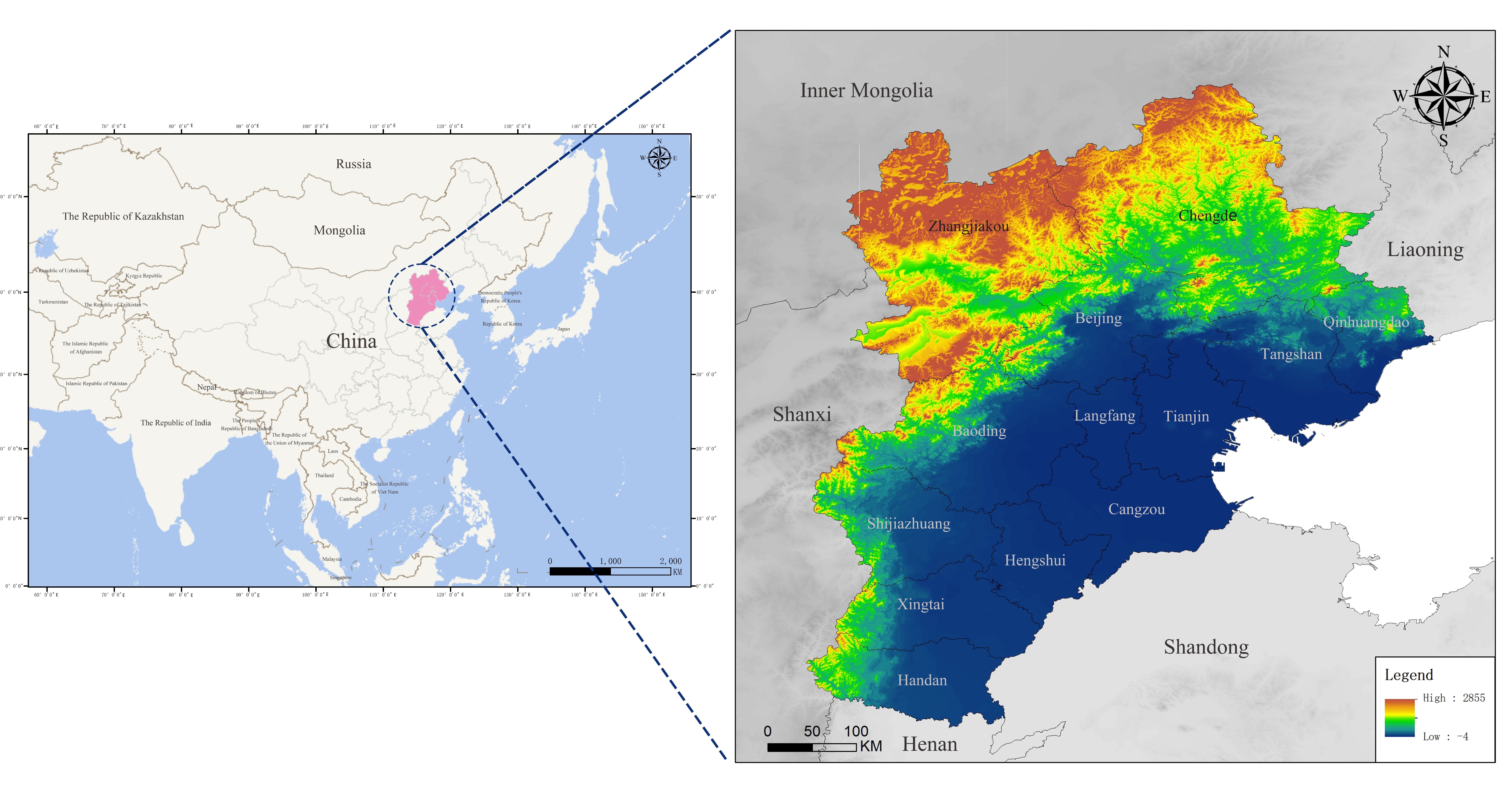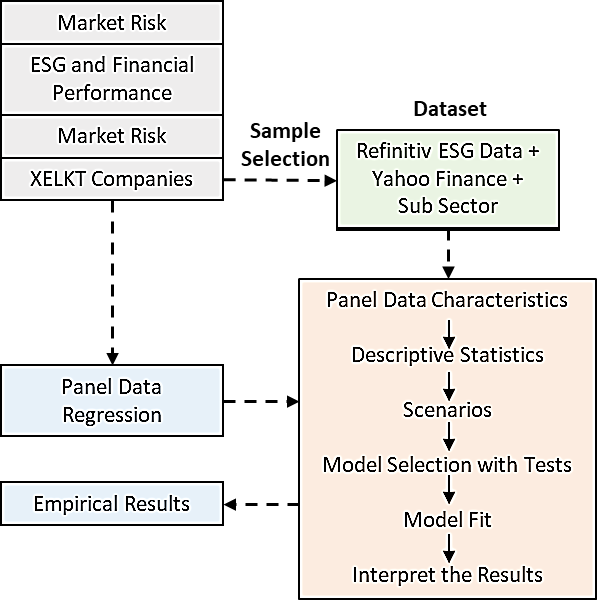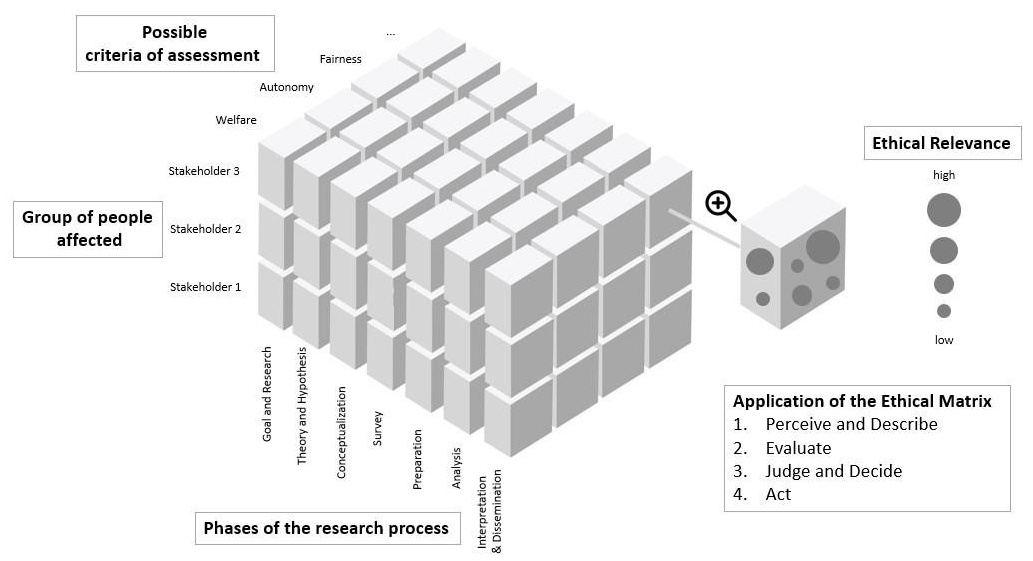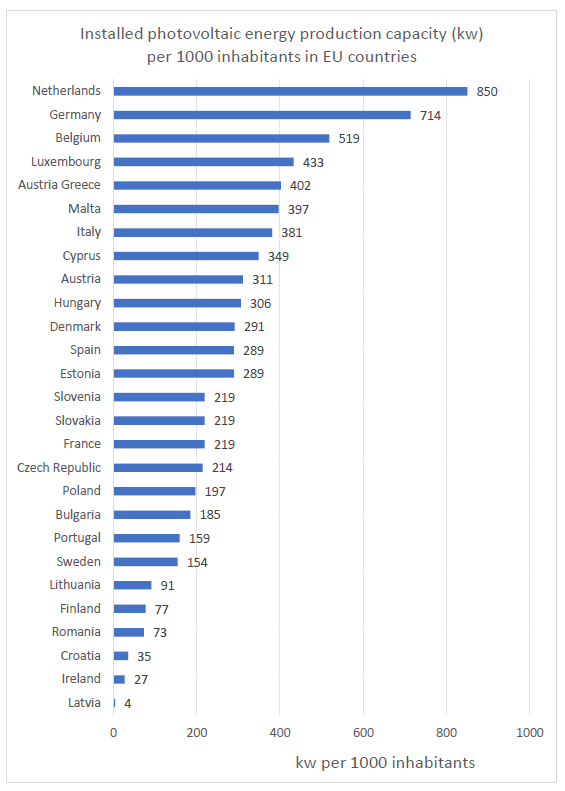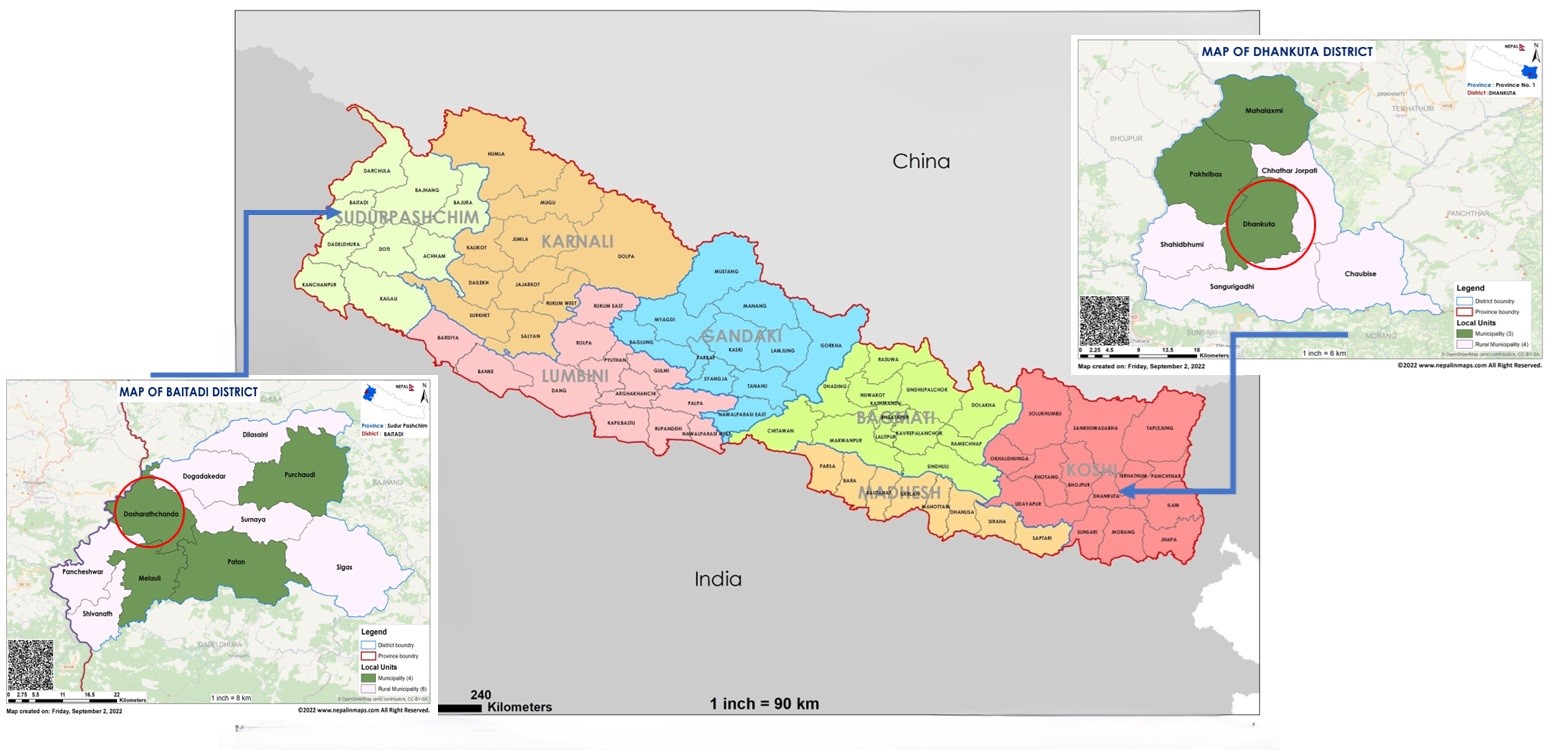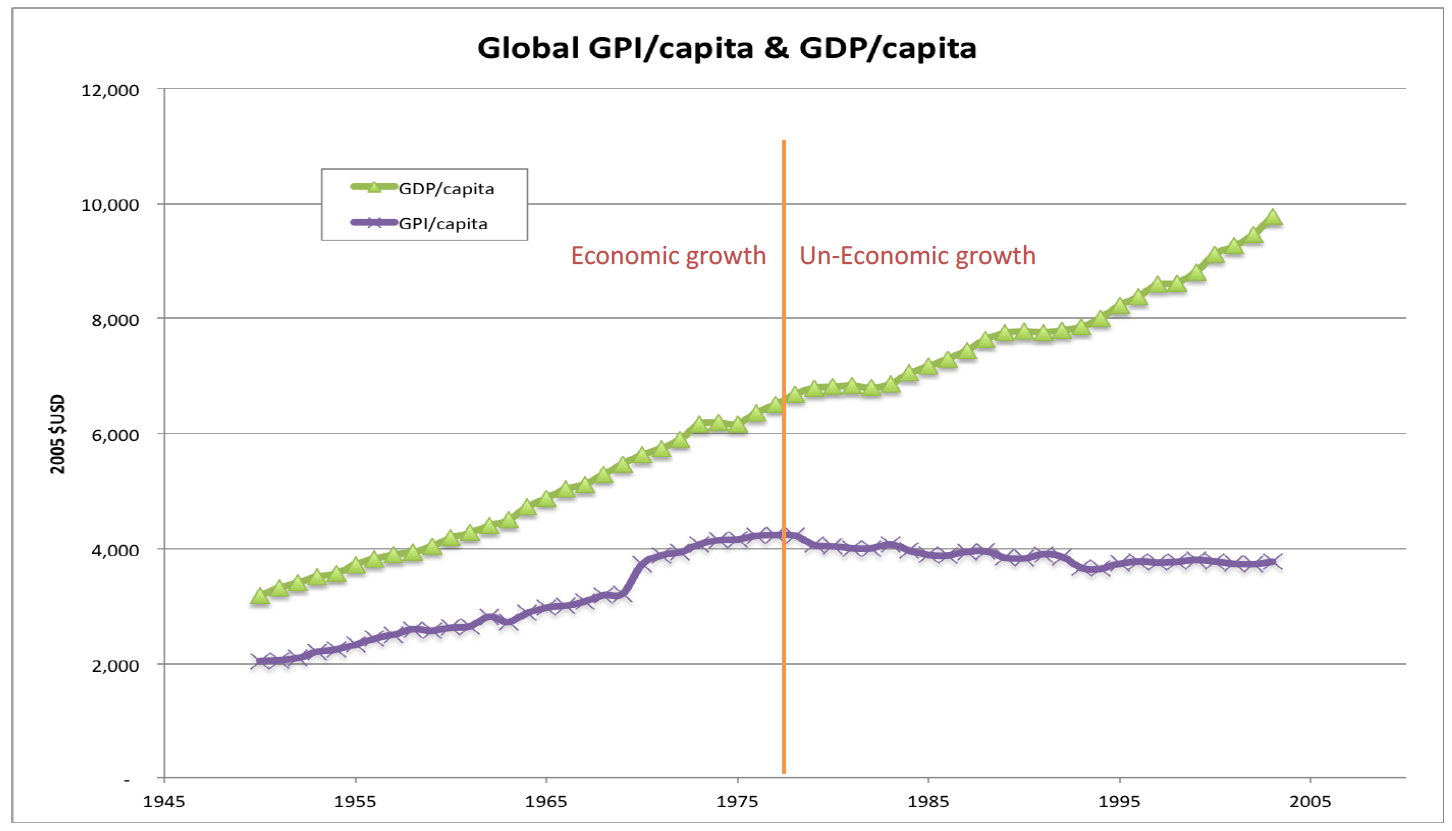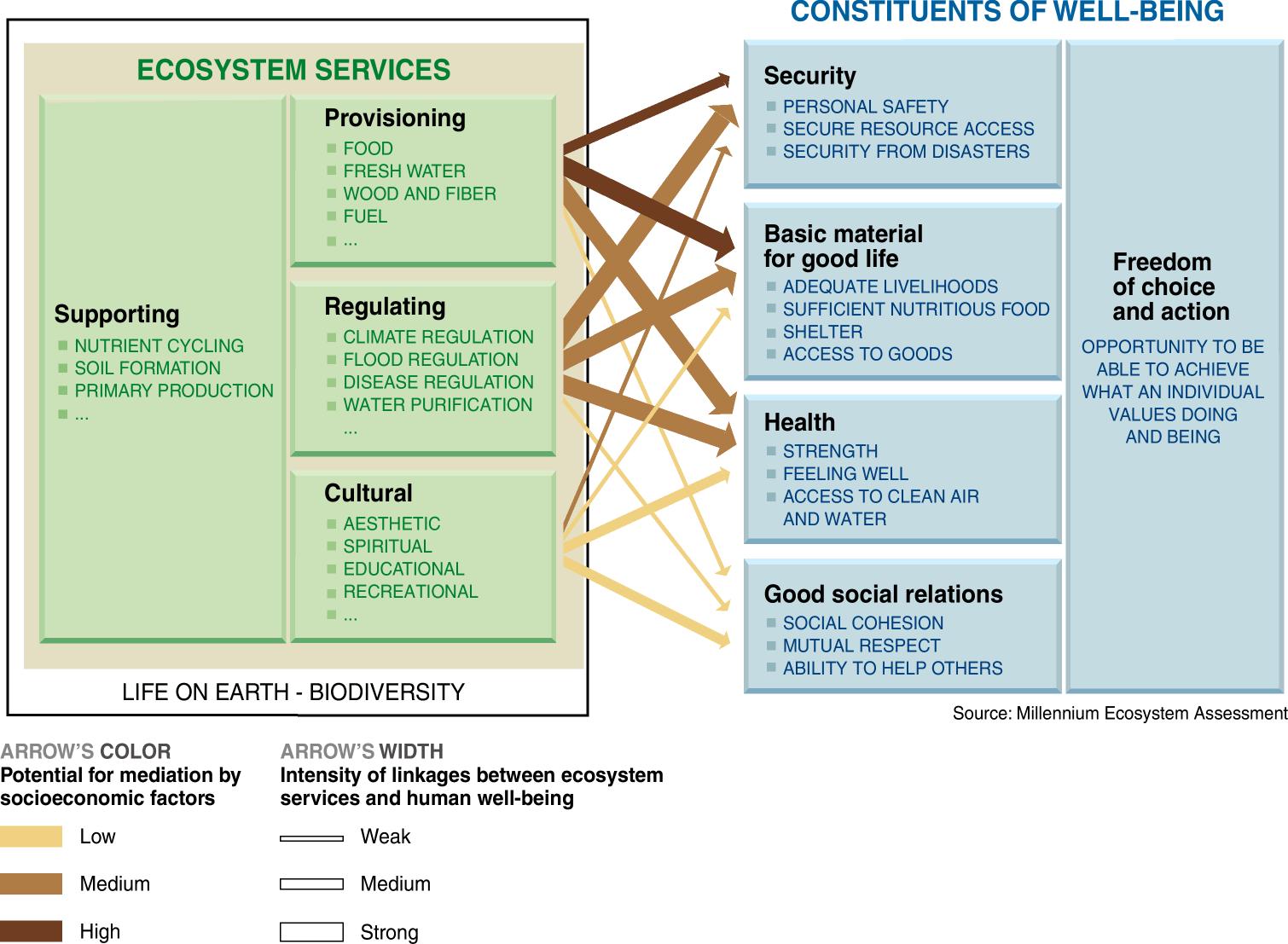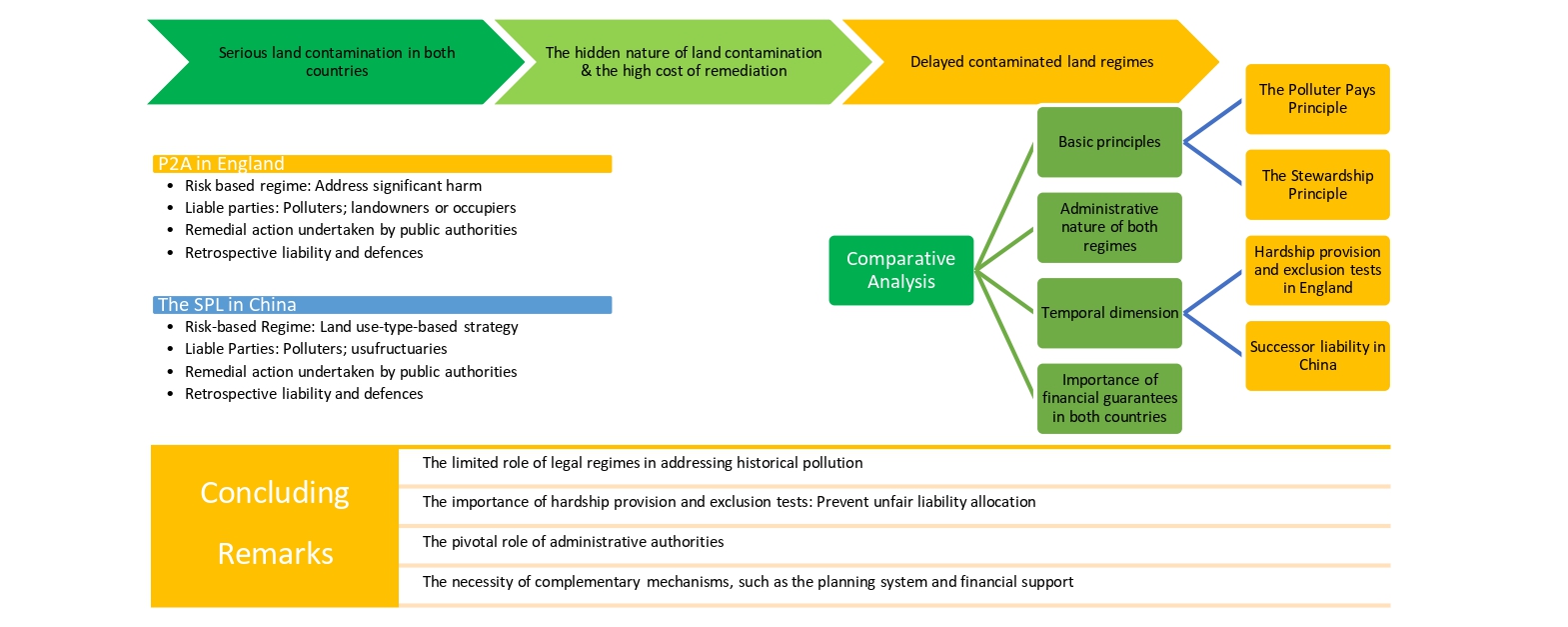Articles (44)
Open Access
Review
23 October 2025Unpacking the Transformative Power of the Rights of Nature: Rethinking Self, Society, and Nature in Environmental Governance in Tanzania
This study examines the transformative potential of integrating the Rights of Nature (RoN) into Tanzania’s environmental governance framework to address persistent ecological degradation, legal marginalization of local communities, and systemic governance gaps. Despite global progress in adopting the Rights of Nature (RoN), where ecosystems are granted legal personhood and communities serve as guardians Tanzania’s legal and institutional frameworks remain predominantly anthropocentric, lacking provisions that recognize nature’s intrinsic value. The primary objective of the study was to critically evaluate the extent to which Tanzania’s current governance systems reflect or exclude RoN principles and to propose transformative pathways grounded in justice, inclusivity, and local knowledge. The study analyzed international legal instruments, Tanzanian statutes, scholarly literature, and case studies using a doctrinal and thematic review methodology. Findings reveal that, despite Tanzania’s comprehensive environmental legislation, such as the Environmental Management Act (2004), key provisions fail to ensure procedural justice and exclude communities from meaningful participation, particularly under Strategic Environmental Assessment regulations. Conversely, local and Indigenous communities such as the Maasai, Chagga, and Zaramo have long practiced ecological stewardship grounded in relational worldviews, echoing RoN values. However, these systems are neither legally recognized nor institutionalized. The study concludes that a shift towards rights-based and transformative governance is necessary to address environmental injustice and ecological decline. It recommends revising legal frameworks to grant ecosystem rights, mandating participatory governance, and embedding Indigenous and local knowledge into environmental policy. Such reforms will not only enhance ecological integrity and local empowerment but also contribute to achieving Tanzania’s commitments under Sustainable Development Goals (SDGs) 13, 15, and 16.
Open Access
Article
17 October 2025Bioenergy Technology and Carbon Intensity in U.S. and China: Threshold Roles of Capital Accumulation, Education and Inequality
Bioenergy technology holds significant promise for reducing carbon intensity and fostering sustainable development, yet its impact remains unclear. This article employs both a panel threshold model and a random forest model, analyzing data from the primary administrative regions in the United States and China to explore the threshold effects and regional heterogeneity of bioenergy technology on carbon intensity, where the bioenergy technology is measured using patent data. In the United States, the impact of bioenergy technology on carbon intensity initially shows a positive effect, which later turns negative as per capita capital stock increases. The technology’s inhibitory effect strengthens with higher levels of education but becomes insignificant as the Gini coefficient rises. In China, increasing per capita capital stock shifts the impact of bioenergy technology from negative to insignificant, while higher education levels enhance its inhibitory effect. The Gini coefficient, however, does not significantly affect the impact of technology. Additionally, these threshold effects exhibit notable regional variations. The study provides cross-country evidence of how institutional and structural conditions shape the carbon mitigation effects of bioenergy technology, offering practical insights for policies that combine trade facilitation, education, and inequality reduction with low-carbon energy transitions.
Open Access
Article
26 September 2025Land Use and Land Cover Assessment of Jalandhar, India: A Comparative Analysis of Machine Learning and Visual Interpretation
For the sustainable management of natural resources and to understand how the climate affects the landscape, accurate land use and land cover (LULC) classification is essential. Robust classification techniques and high-quality datasets are necessary for precise and effective LULC classification. The effectiveness of various combinations of satellite data and classification techniques must be carefully evaluated to help choose the optimal strategy for LULC classification, given the growing availability of satellite data, geospatial analysis tools, and classification techniques. This study focuses on the LULC classification of Jalandhar, Punjab, India, using machine learning (ML) algorithms and visual image interpretation. Sentinel-2 satellite data, with its high spatial and spectral resolution, has been utilized for feature extraction and classification. Python was employed for implementing various ML algorithms, including Random Forest (RF), Support Vector Machine (SVM), K-Nearest Neighbor (KNN), Gradient Boosting (GB), Multi-Layer Perceptron (MLP), and Decision Tree (DT), while ArcGIS was used to classify LULC using visual image interpretation and for maps preparation. Agriculture was the dominant class across all methods, with GB estimating 1774.26 sq.km, followed by plantation (268.13 sq.km) and built-up areas (171.76 sq.km). Waterbodies were mapped with high precision due to their distinct spectral features, with estimates ranging from 18.34 sq.km (GB) to 26.05 sq.km (Visual interpretation). Among all models, GB outperformed others with the highest overall accuracy (95.0%) and a kappa value of 0.94, followed by RF (94.2%), and SVM (93.8%). Visual interpretation achieved a comparative accuracy of 90.1%, though it showed limitations in distinguishing spectrally mixed classes like plantation and built-up. This study concludes that while Visual interpretation remains a useful and accessible method, especially for real-time interpretation, ML-based approaches, particularly GB and RF, offer superior accuracy and reliability. The study highlights the importance of visual interpretation for a better accurate LULC at a regional level; meanwhile, leveraging advancements in ML algorithms in a hybrid approach will enhance the accuracy in many-fold.
Open Access
Article
17 September 2025Carbon Emission Rights as a New Form of Usufructuary Right
The debate surrounding the legal nature of carbon emission rights arises from the tension between their dual characteristics of public and private law, which challenges traditional property rights theory. This tension has led to conflicts regarding the effectiveness of legal frameworks, fragmented regulations, and a crisis of institutional trust within the carbon market. Carbon emission rights should be redefined as a novel form of usufructuary right, with ecological capacity resources—owned by the state—serving as the object. These rights are realized through digitalization and specificity enabled by blockchain technology. Their powers and functions can be understood as twofold: the power of quota control, which falls under public law constraints, and the power of ecological benefits, which exists within private law autonomy. The former limits the boundaries of private rights by ecological thresholds, while the latter translates ecological value into non-possession benefits. To address these issues, a “two-stage governance” system can be established through a dynamic interpretation of Article 329 of the Civil Code of the People’s Republic of China (2020), creating a registration system and enacting specialized legislation for Carbon Emission Rights Trading. By conceptualizing carbon emission rights as a new type of usufructuary right, the contradictions between public and private law can be reconciled, enabling the transition of the carbon market from a policy-driven to a rights- and law-based operation.
Open Access
Review
13 August 2025Allowing Space for Nature: Rewilding to Heal the Earth
The term “rewilding” often elicits strong emotions, especially as presented in the media. Thus, anger is provoked that farmers will be forced to waste precious cropland, letting it return to the wild, or from fear that dangerous animals will be released into the urban environment. With equal fervour, others, taking an approving view, comprise the growing movement of guerrilla rewilders, secretly breeding butterflies, birds and beavers, and illegally releasing them (e.g., “beaver bombing”) across the countryside. In truth, rewilding is a complex and widely encompassing proposition, which can be considered as a strategy within the natural climate solutions (NCS) [nature based solutions (NBS)] approach, aimed to restore and enhance wetlands, grasslands, forests, agricultural lands, seascapes etc. While exact definitions may vary, a key feature is that (after some initial support) it minimises the level of human intervention/management in a given region, instead encouraging natural processes to take the lead and self-manage, in the restoration, shaping and enhancement of natural ecosystems and of critical ecosystem functions. The resilience of such ecosystems should also be considered, especially in regard to how the impacts of a changing climate may prevail upon them. Rewilding is informed by science, traditional ecological knowledge (TEK), and other local (indigenous) knowledge. It is a long-term process with dynamic changes occurring over time, and rather than focussing on reaching a fixed endpoint, provides a continuous journey of letting nature’s processes unfold. This can lead to increased biodiversity, amelioration of and resistance to climate change, and the provision of ecosystem services, benefitting both nature and people, including economic opportunities for local and indigenous communities, along with improved overall health and well-being. Despite its manifold and clear benefits, rewilding (along with other NCS) is not a pancea for all our troubles, many of which are rooted in the systemic issue of human ecological overshoot, and it is this that must be addressed to begin fixing the current global polycrisis.
Open Access
Article
07 August 2025Daoism, Confucianism, and the Rights of Nature: Transformative Relations in Ecological Governance
Confronting a global ecological crisis, this paper argues that conventional anthropocentric governance models, rooted in instrumental rationality, are inadequate. Drawing on Edoardo Ongaro’s concept of an integrative approach to an ontological and political philosophical understanding of public governance and administration, it proposes a relational framework for ecological governance by integrating the Rights of Nature (RoN) movement with classical Chinese philosophical traditions. The study emphasizes the complementary foundations offered by Daoism, specifically its concepts of ziran (natural spontaneity) and wuwei (non-coercive action) which support decentralized governance aligned with ecological self-organization, and Confucianism, particularly tian ren he yi (unity of heaven and humanity), which embeds ecological stewardship within moral self-cultivation (ren) and social duty (li). Comparative case studies highlight cultural complexities in implementing such relational governance. This paper outlines a tripartite pathway for building transformative capacities within this relational framework and discusses policy implications.
Open Access
Article
07 August 2025Examining Interactions among Challenges of Green Financing in India
This study examines the challenges of green financing in India using Interpretive Structural Modeling (ISM) to identify hierarchical relationships among key factors. The research identifies regulatory deficiencies as the foundational barrier, cascading into secondary challenges such as data gaps, low investor awareness, high costs, and limited access to financial products. These issues, compounded by greenwashing, hinder transparency and the accurate measurement of environmental returns. The structural modeling approach provides a novel contribution by revealing how these interconnected challenges stem from weak regulatory frameworks—an insight not previously mapped in Indian green finance literature. The study underscores the importance of strong legal systems, standardized metrics, technological advancement, and policy harmonization to build investor trust and improve accessibility. For scalable and effective solutions, future research should explore the integration of emerging technologies and conduct cross-regional comparative analysis.
Open Access
Article
21 July 2025The Intergovernmental Networks of Ecological Protection Policies Issuing Entities in the Source Region of the Yangtze River: A Case Study of Qinghai Province
Ecological conservation and governance play key roles in constructing an ecological civilization society, while intergovernmental cooperation provides new perspectives for cross-regional ecological governance. We employed a social network analysis (SNA) method to examine 110 published ecological policies from 2000 to 2024 in the Source Region of the Yangtze River (SRYR). The study has three key findings. Firstly, intergovernmental collaborative policies on ecological protection showed an upward trend, with intra-provincial collaborations within Qinghai Province being the most frequent. Secondly, four collaboration models were demonstrated, namely: national ministries, national and provincial, cross-provincial and intra–provincial collaborations. National agencies and Qinghai provincial agencies collaboratively set objectives, which Qinghai operationalizes with incentive-constraint measures. Then, the targeted guidelines were launched by national and provincial authorities. Afterward, cross–provincial agreements and mechanisms facilitate joint actions. Thirdly, we revealed the hierarchical structures, including a national network, two central-local sub-networks, three-tier inter-provincial partnerships, and four regional sub-clusters. Core actors include national ministries that coordinate cross-departmental efforts. The Qinghai provincial government serves as a central-local hub. It maintains strong transboundary ties with Aba and Ganzi Prefectures of Sichuan Province. Provincial departments such as ecology and environment, forestry and grasslands, and finance lead intra-provincial collaborations. These findings offer new insights for integrating multi-level governance in ecological protection and ecological civilization construction.
Open Access
Article
26 June 2025Law and Governance of Carbon Border Adjustments
Measured against the legally binding international climate targets, climate policy must be massively accelerated on a worldwide scale. In the absence of effective global policy instruments, a central role can be played by combinations of regional quantity governance systems, such as the EU Emissions Trading System, and additional border adjustments, such as the newly established EU Carbon Border Adjustments (CBAM). This is to avoid mere emissions shifting to other states, to encourage these states also to pursue ambitious climate protection, and to avoid competitive disadvantages for domestic industries. This paper analyzes the ecological effectiveness of the CBAM—measured against the Paris climate targets—and its compatibility with world trade law. It combines a qualitative governance analysis with methods of legal interpretation. It is demonstrated that the CBAM does not raise any concerns under WTO law and can be classified as an ecologically effective measure supporting ambitious climate protection. However, the faster and more consistent introduction of the CBAM would be ecologically more effective.
Open Access
Article
03 June 2025Ecosystem Service Importance, Contributions, and Trends: Perspectives from Farmers in the Mountains of Nepal
Understanding farmers’ perceptions of local ecosystem services is crucial for developing effective ecosystem management strategies and policy interventions to improve the overall welfare of residents. Although there is widespread recognition of the linkages between ecosystem services and human well-being, empirical studies examining farmers’ perceptions and contributions to local ecosystem services, particularly at the micro level in mountainous regions, remain limited. To address these knowledge gaps, we conducted an empirical study employing focus group discussions (n = 6), key informant interviews (n = 12), and household surveys (n = 370) in Mid-Marsyangdi watershed, Lamjung, Nepal. The study revealed that farmers perceive high dependency on regulating followed by provisioning, supporting, and cultural ecosystem services such as freshwater, nutrient cycling, water regulation and purification, timber production, livestock fodder, and natural hazard regulation. Their contributions are notably high in managing freshwater, nutrient cycling, and timber production. Farmers’ practices like forest conservation, agroforestry, inter-cropping, terracing, terrace improvement, multi-year cropping, and organic composting enhance ecosystem services. A significant discrepancy exists between perceived importance and actual contribution, particularly in water regulation, purification, and wild edible food, highlighting areas needing greater attention. The study showed a significant difference (p < 0.001) between perceived importance and contribution across all ecosystem services, with perceived importance consistently higher. Further, a study showed the influence of socio-demographic variables on the farmers’ perception. These findings can inform more effective policy-making for farmer welfare, mountain development, and environmental management.
Open Access
Review
19 May 2025Ecological Degradation and Restoration Process in the Source Region of Yangtze River: A Review Using the DPSIR Framework
By the end of the 20th century, the Source Region of the Yangtze River (SRYR) suffered severe ecological degradation driven by the combined effects of climate change and human disturbances. To counteract ecological degradation, the Chinese government implemented multiple ecological protection and restoration measures. Based on a literature review, this study analyzed the entire process of ecological degradation and restoration in the SRYR using the DPSIR (Drivers-Pressures-States-Impacts-Responses) framework. It revealed that climate warming and grazing expansion were the main drivers. Under the dual pressures of natural and anthropogenic disturbances, grasslands experienced severe degradation, accompanied by significant losses of soil nutrients. The decline in grassland quality weakened ecosystem service functions and reduced the livelihood levels of herders. After implementing the ecological protection and restoration projects in China, the ecosystem had been effectively restored. Herders’ income levels had been improved. However, a mismatch persisted between ecological compensation standards and livestock reduction costs for herders. Future efforts should focus on the innovation of the institution and ecological restoration techniques. This study offers critical insights into ecological protection and restoration strategies, providing practical references for decision-makers to accelerate the realization of China’s ecological civilization objectives.
Open Access
Perspective
16 May 2025From “Land” to “Ecosystems”—Paving the Way for Ecosystem Services in Sustainable Finance
Although biodiversity loss is acknowledged as one of the main drivers of financial risk, there is still no clear understanding of how impacts and dependencies on biodiversity affect the financial sector. In fact, nature degradation does not manifest itself as a systemic risk because it does not threaten the very nature of the financial system. There are transmission channels between nature and finance that need to be investigated: the many intermediate cause-and-effect relationships should be identified and assessed. Such a process involves multiple disciplinary domains, ranging from ecology and economics to finance. An Ecosystem Services-based approach may represent a comprehensive framework to (i) reconcile coherently different environmental issues such as climate change, biodiversity loss, pollution and sustainable use of resources, and (ii) connect ecosystems and socio-economic systems. Not only can ecosystem services be assessed, but also ecosystem vulnerabilities which are at the origin of nature-related financial risks. Adopting an ecosystem services-based perspective can be the first step toward building ecologically meaningful and economically useful transmission channels for financial risks.
Open Access
Article
08 April 2025Research on the Logic of Mobile Governance from the Perspective of Path Dependency: A Case Study of the Implementation of the “Coal-to-Gas” Policy in Rural Areas of Handan
Mobile governance, a commonly used governance approach in China, has always been controversial. Behind the persistence of mobile governance lies the underlying governance logic. This paper takes the implementation of the “coal-to-gas” policy in rural areas of Handan as a case study to analyze the path-dependent logic inherent in mobile governance. The paper argues that mobile governance’s selection path embodies path dependency characteristics, including three paths: conformist path dependency, policy-based path dependency, and demand-based path dependency. Mobile governance can be regulated through three paths: formulating a comprehensive list of rights and responsibilities for grassroots governance, the provincial government enacting relevant regulations to standardize the grassroots governance process, and vigorously developing e-government and digital government technologies to enhance the rule of law and standardization in grassroots governance.
Open Access
Article
17 March 2025A Strategy for Resisting the Vested Interests Driving the Collapse of the Biosphere and Civilisation
The biosphere and civilisation are facing existential and other major threats: climate change, biodiversity loss, nuclear war, social inequality/injustice, loss of human rights, and autocracy. These threats are driven by politically powerful vested interests supported by an economic system based on the exploitation of the environment and most people for the benefit of a wealthy minority. This article proposes a strategy to resist and weaken state capture, i.e., the influence of the vested interests driving the principal threats, while simultaneously facilitating the transition to a sustainable society. Despite the achievements of diverse community-based non-government organisations (CNGOs) campaigning on specific issues, scientists are now warning of the potential collapse of civilisation. As the threats are linked together in several ways, I propose a strategy to address them together to yield multiple benefits, supplementing campaigns on individual issues. A broad social movement—comprising an alliance between CNGOs devoted to the environment, social justice, human rights, and peace—could exert sufficient political power to expose and defeat the methods of state capture. Simultaneously, the movement could gain widespread community support by campaigning for a well-being economy, including universal basic services and a job guarantee, thus facilitating the transition to an ecologically sustainable, more socially just, and more peaceful civilisation.
Open Access
Editorial
17 March 2025The Roots of Rights—Special Issue: “Transformative Practices: Rights of Nature and the Good Life”
This special issue focuses on the social practices of Rights of Nature (RoN), specifically exploring the transformative competencies and skills involved. The research investigates both individual competencies, such as resilience, mindfulness, and creativity, and collective skills, like relationship building and sustainable forms of interaction with the social and the ecological environment. The central question is if RoN does include “best practice” examples of cultivating non-instrumental relationships with the self, the social other, and the natural other.
Open Access
Article
03 March 2025Harmony between Humanity and Nature in the Beijing-Tianjin-Hebei Urban Agglomeration during Decadal Development
Building harmony between humanity and nature
(HHN) migrates the conflict between social-economic development and
eco-environmental conservation, promoting the coordination and balance between
economic development and ecological protection, and then achieving the state of harmonious coexistence
between humanity
and nature. Here, taking advantage of the Beijing-Tianjin-Hebei urban
agglomeration as the research region, this study aimed to evaluate the changes
in comprehensive level of economic, social, and ecological development, as well
as the coupling coordination degree of HHN from 2014 to 2021, and to identify
their spatio-temporal evolution patterns. The findings reveal that from 2014 to
2021, the comprehensive development level of HHN in the Beijing-Tianjin-Hebei
urban agglomeration exhibits a linearly increasing pattern, with significant
differences in time and space.
The comprehensive development level of HHN in the northern region of the
Beijing-Tianjin-Hebei urban agglomeration has always been higher than that in
the southern region. By
2021, all the cities had basically reached a middle development level. And the
coordination degree of the comprehensive development of HHN showed a healthy
development trend. In 2021, the coordination degree of HHN in the Beijing-Tianjin-Hebei urban agglomeration was at
transitional development, with an average annual increase of 3%. In the future, the Beijing-Tianjin-Hebei urban agglomeration should
prioritize coordinated development of HHN, enhance eco-environment protection
and management, promote industrial transformation and upgrading, explore new
development modes and ecological resource transformation strategies, and
establish a modern capital region characterized by high-level ecological
civilization development.
Open Access
Opinion
10 February 2025Depletion and Recovery of Soil Organic Matter: Ecological, Economic and Social Implications
Over the past decades, urbanization, industrialization and unsustainable management have impaired soil fertility and ecosystem functioning, thereby affecting ecological stability and economic development. The mechanistic coupling between pressures and effects lies in the loss of soil organic matter (SOM), which directly and indirectly controls the vast majority of soil properties and the functioning of the soil ecosystem. From the functions SOM exerts in the soil ecosystem, to the consequences of its depletion and the possibilities it offers for ecological restoration, this concise opinion offers a perspective on the multifaceted roles of SOM in sustaining ecosystem functioning and the services it generates. Indeed, SOM plays crucial roles in supporting soil long-term fertility and the provision of ecosystem services, such as food, water, genetic, medical and biochemical resources, religious, cultural and recreational values, as well as sequestration of carbon and regulation of climate. These roles foster the view of SOM as an ideal proxy for soil quality and health, and justify the interest in acting on SOM as a mean of enhancing the sustainability and effectiveness of ecological restoration projects. The improvement of SOM to favor the onset of proper ecological dynamics in heavily degraded ecosystems, such as urban, industrial and agricultural soils, can be also coupled to the recovery of useful organic matter from wastes, integrating ecosystem restoration within waste management and sustainable circular economy strategies. Since, ultimately, the sustainability of our civilization depends upon proper ecological dynamics, soil quality rises to a topic of public concern and this opinion aims at providing a reference point of view on the intertwined implications of its preservation on the ecological, economic and social spheres.
Open Access
Article
09 January 2025Sustainability Practices and Financial Performance: Evidence from BIST Electricity Index
Amidst the backdrop of heightened market risks associated with transitioning to a lower-carbon economy, this study pioneers an examination of the correlation between sustainability and financial performance within Turkish energy market generator and retailer companies. In this study, the sustainability performance, exposure to market risks and effects on the financial performance of sub-sectors of companies listed in the BIST Electricity index were analyzed using panel data regression. The findings reveal a nuanced relationship between sustainability factors and financial performance, underscoring the imperative for electricity sector companies to prioritize sustainability initiatives not only for ethical reasons but also as a strategic imperative for long-term financial success and stakeholder value creation. Finally, the possibility of impending regulatory changes underscores the importance of early adoption of sustainability practices to mitigate potential financial liabilities and navigate future market risks effectively.
Open Access
Article
18 December 2024EU Energy Law: Insufficient for the 1.5-Degree Celsius Limit—The Examples of EU Emissions Trading and Hydrogen Policies
This article examines the extent to which the current EU climate protection law fulfils the 1.5-degree limit from Article 2 of the Paris Climate Agreement. To this end, a qualitative governance analysis is applied. On this methodological basis, the main instrument for fossil phasing-out—the emissions trading scheme—and the promotion of hydrogen are discussed as examples. The results show that the EU must further intensify its efforts on its territory and cooperate with other countries since the reformed ETS 1 and ETS 2, the SCF and the CBAM are not sufficiently effective to stay within the 1.5-degree limit of the Paris Agreement. This is also the case with regard to hydrogen policies. The primary focus of energy law on the ETS is therefore fundamentally convincing; however, it should be implemented more consistently, for example, in terms of the breadth of the approach, closing loopholes and the level of ambition.
Open Access
Article
16 December 2024Exploring the Values of Sustainability and the Cost of Going Green: A Case of Building Research Establishment Environmental Assessment Method (BREEAM)
Despite the expansion of BREEAM and the benefits of adopting sustainable building practices, there are concerns that the cost of going green may outweigh the benefits. Whilst previous studies have not provided adequate clarity in this regard, there is consensus among scholars that BREEAM provides indirect benefits that can be considered as added value. This paper aims to investigate the potential cost implication and benefits of sustainable building practices from the lens of the Building Research Establishment Environmental Assessment Method (BREEAM) in the UK. Adopting survey research strategy, questionnaires, and interviews with 34 construction industry professionals in Southeast England were conducted to investigate their perceptions of BREEAM, the extra value it contributes to projects, and the possible limitations hindering its wider adoption. Findings show that while there is an upfront investment associated with achieving BREEAM certification, the benefits of such certification include added values such as improved environmental performance, increased market appeal, improved indoor air quality, reduced carbon emissions, and lower operational costs. This study validates the need to encourage wider adoption of sustainable building practices and promote the use of the BREEAM methodology in the UK. This research provides a foundation for future research and development in this area, with the goal of reducing carbon emissions and promoting sustainable development.
Open Access
Article
18 November 2024Developing a Climate Litigation Framework: China’s Contribution to International Environmental Law
Although “climate litigation” is not an indigenous term in China, localizing it is essential to support the development of an independent environmental legal knowledge system in China. Rooted in China’s judicial tradition, which emphasizes substantive rationality, traditional legal theories have primarily focused on environmental law. However, the contemporary practices in the rule of law have created an unclear trajectory for climate litigation. Research in this area has long been trapped in a paradigm that relies on lawsuits for ecological environmental damage compensation and environmental public interest litigation, leading to a significant disconnect between theoretical framworks and practical application. With the advancement of the "dual carbon" strategic goals—carbon peaking and carbon neutrality—it has become imperative to redefine the concept of climate litigation within the Chinese context. We need to establish a theoretical framework that aligns with the “dual carbon” objectives while providing theoretical and institutional support for climate litigation, ultimately contributing to the international discourse on climate justice. Additionally, Hong Kong’s proactive climate governance and robust ESG (Environmental, Social, and Governance) practices provide valuable insights for developing comprehensive climate litigation mechanisms. Based on this analysis, we propose concrete plans for building a climate litigation system in China, establishing a preventive relief system and a multi-source legal framework at the substantive level and developing climate judicial mechanisms for mitigation and adaptation at the procedural level.
Open Access
Article
28 October 2024Challenges and Solutions: China’s Illegal Hunting Crime from the Perspective of Ecological Civilization Development
In recent years, the number of crimes involving illegal hunting in China’s judicial system has steadily increased, giving rise to numerous disputes. The root of these disputes lies in the fact that China’s Criminal Law lags in terms of animal protection legislation, failing to strike a balance between wildlife protection and human rights. This disconnection is particularly evident in the legislation and judicial practice regarding illegal hunting crimes and the value principles of ecological civilization strongly advocated by China. Moreover, China’s legal framework and judicial practices concerning illegal hunting crimes suffer from low thresholds for conviction and a lack of comprehensive investigations into the subjective intentions of offenders. Chinese legislators and judges should consider international experiences in combating illegal hunting crimes, elucidate the right to defend oneself against wildlife in certain dangerous situations, and thoroughly revise legal provisions, including the definition of illegal hunting and related judicial interpretations. Additionally, greater efforts should be made to disseminate public legal knowledge regarding illegal hunting crimes.
Open Access
Review
30 September 2024Ecological Civilizations—A Development Narrative for the Global South?
We explore possibilities for the ecological civilization imaginary of China to become a sustainable development narrative shared by a growing number of GS nations. We first highlight the influence GS countries had on the evolution of the concept of sustainable development. GS nations’ interest in retaining economic development options, including energy and materials needed for industrialization and economic expansion, will increasingly contradict global environmentalist narratives of the latter half of the 20th century. The adaptation of GS nations to previously untested energy and material futures will depend on experimentation and learning from initiatives primarily designed and implemented by GS governments at the national, provincial, and local levels. If China succeeds in demonstrating practical examples of ecological civilization construction, it will stimulate other GS countries to learn and adapt lessons to suit their own needs. Multi-country arrangements that China has created could serve as forums to refine the ecological civilization narrative as a development alternative to the dualist conservation vs development thinking and practice of the latter half of the 20th century.
Open Access
Article
27 September 2024Responsibility as Method—A Model for Operationalizing Ethical Reflection in the Sciences
In this article, we show why the growing significance of ethics entails that the call for ethical evaluations is no longer just a specific issue for the particular discipline of academic ethics but a challenge for all academic researchers. Therefore, complex theoretical approaches must be put into practice, and the relationship between ethics and other scientific fields must be clarified. Hence, this essay shows how these requirements can be fulfilled and how to cope with the complexity of ethical consideration on a practical level. We aim to operationalize responsibility as a method. In order to achieve this, basic criteria of practical ethical reflection are elaborated. As a result, we suggest an extended ethical matrix covering the entire research process using a step-by-step model. Our ethical matrix is designed to help researchers reflect and make judgments on moral and ethical issues, enabling them to find their own solutions to these challenges without providing a formal guideline for moral decision-making.
Open Access
Perspective
09 September 2024Social, Ecological and Economic Synergies of Forests for Sustainability Contradict Projects Involving Large-Scale Deforestation for Energy Production
Good projects and solutions aiming at sustainable development must repair the damage done in past decades by being explicitly designed and monitored to achieve synergetic benefits for the environment and society. We identify environmental, social and economic aspects of sustainability in which enlightened forest management can increase the fulfillment of human and ecological needs and hence the quality of life of present and future generations. Projects aiming at energy production and profits at the cost of biodiversity, nature protection, and human health and well-being are therefore questionable and increasingly socially and politically unacceptable—especially where the viability of alternative options with better social and ecological footprints can be easily demonstrated. This is also true for renewable energy projects. The perspective presented here demonstrates how ostensibly renewable energy projects in natural areas, such as large-scale wind and solar power plants in traditional forests, which are planned, for example, in Germany, may be detrimental to ecological and social sustainability. Forests cut down for such projects are “non-renewable” within reasonable time-scales left to stabilize our climate and ecosystems. Such projects also impair the credibility of the proclaimed role model character and sustainability leadership of Global North countries, which can lead to negative implications for the protection of forests in tropical countries.
Open Access
Article
29 August 2024Incentive for Ecosystem Services: Governance and Policy Coherence in Nepal
This research highlights the governance of landscape and policy coherence to ensure a sustainable supply of ecosystem services through incentives for ecosystem schemes at the municipal level in Nepal. The study was carried out in Dhankuta and Dasarath Chand municipalities representing Nepal’s Koshi and Sudur Paschim provinces. Six aggregate governance indicators adopted by the World Bank Group were assessed through interviews with primary stakeholders of selected landscapes in two municipalities, followed by Key Informant Interviews. The study indicates that implementation of the Incentive for Ecosystem service scheme is feasible, creating multi-stakeholder institutions at the local level. However, there are several governance challenges to ensure its success. In particular, incentives for ecosystem schemes must be part of local government planning, where multisectoral coordination and collaboration are essential. While municipal authorities have constitutional jurisdictions to initiate such schemes, they lack the human resources to understand ecosystem management for a sustainable supply of ecosystem services. Therefore, landscape governance is essential to make incentive schemes successful and ensure transparency and equitable benefits among ecosystem service providers.
Open Access
Opinion
21 August 2024Open Access
Article
05 August 2024Promoting Ecological Civilization through Religious Prophetic Communication: An Interreligious Framework
This paper explores the transformative potential of religious prophetic communication in advancing an ecological civilization. Drawing upon diverse religious traditions—Christianity, Islam, Buddhism, and Confucianism—it argues that religious teachings offer profound insights and ethical frameworks essential for addressing contemporary ecological challenges. A key aspect of ecological civilization is the presence of a pervasive ecological ethos. The paper contends that religious prophetic communication plays a crucial role in cultivating such an ethos by promoting a heightened ecological conscience and consciousness among individuals and communities. Through prophetic communication, faith actors and communicators articulate moral imperatives rooted in religious principles contextualized to the present ecological situation. The paper delineates five components that make up religious prophetic communication: (1) Communicating from the position of faith; (2) Communicating in a contextually relevant manner; (3) Communicating to energize; (4) Communicating to criticize; and (5) Communicating beyond words. Applied to the ecological context, religious prophetic communication aims to affirm, stimulate imagination, clarify misunderstandings, inspire action, and confront unjust realities. By carrying out its prophetic role, religious communicators can help bring about an ecological ethos and promote the realization of ecological civilization.
Open Access
Opinion
26 June 2024Prospective Approaches for Ecosystem Sustainability Including Climate Mitigation
A summary, based upon foresight, futures, ideation and frontier technology studies of prospective approaches to foster ecosystem sustainability including climate mitigation at the technology and societal levels which are at scale and profitable. Approaches summarized include halophytes/salt plants grown on deserts/wastelands using saline/seawater, to address land, water, food, energy and climate, frontier energetics, nascent climate mitigation concepts, cellular agriculture, materials optimization, the virtual age, efficiency and redesigning the ecosystem for the Anthropocene. Solution/mitigation approaches are targeted at deforestation, desertification, pollution writ large (land, sea, air, space), and extensive urbanization along with soil salination, ocean acidification, mining, and water scarcity.
Open Access
Article
23 May 2024Proposal for A Systemic Human Ecological Turn for Health Science and Medicine
Industrial development processes, accompanied by extreme growth processes, regards world population, pollution, food production and the exploitation of natural resources have caused severe ecological problems. This has been well known since 1972 through the study ‘The Limits to Growth’, in which humanity and the world society was called upon to make an ecological turn and to change its consumption model and the type of economic development that was not suited to finite natural resources (or a finite planet). However, the relationships between the state of the environment and human health have hardly been considered, although an ecological view of health was already proposed by Hippocrates, and as in the meantime, the technical terms “Environmental Health” and “Environmental Medicine” have become established at universities. It is only in recent times that global terms such as climate medicine, One Health, Eco Health, etc. have become powerful pragmatic and action-oriented initiatives. They can be understood as calls for a worldwide health-related ‘ecologization’ of (health) culture. Regarding these approaches we highlight theoretical and metatheoretical aspects, since in general, any real action is only as good as the analytical quality of the plan that serves as a guide for that action. From this point of view, we find that these approaches exhibit striking weaknesses. These are, among other things: the neglect of epistemological challenges combined with inconsistent conceptualizations of the category environment, the very superficial models of human beings, weaknesses of ecological frameworks in relation to the macro-, meso- and micro-eco-social levels of the targeted topics, and a vague notion of systems methodology. Following on from this, we call for an explicit social-/human-ecological framework (New Viennese School, Australian School) for environmental health issues as it has been established for decades in the field of environmental, sustainability and transformation sciences.
Open Access
Article
22 April 2024
Construction of a Comprehensive International Legal
Protection Mechanism for Climate Refugees
Climate refugee has become an unavoidable major right crisis challenge for the international community. However, the corresponding development of positive international law is obviously imperfect. The basic rights of climate refugees cannot be fully guaranteed by international law. They are always facing problems such as unclear legal status lack of protection of basic rights, and imperfect relief mechanism. Those vulnerable groups who lack resources and migration abilities suffer more serious rights violations because they are forced to stay in place. Compared with the risk-management framework and right-protection framework, the comprehensive international legal protection mechanism is the inevitable choice for climate refugees’ rights relief in the post-2012 period. The rights of climate refugees set out in the preamble of the Paris Agreement in 2015, the New York Declaration on Refugees and Migrants in 2016, the Global Refugee Compact in 2018, and the Global Compact for Security, Order and Regular Migration formally incorporated the issues of refugees and migrants caused by climate change, laying the foundation for this choice. However, it is a long and difficult way to build a perfect comprehensive international response to climate change. It is not only necessary to realize the integration of human rights law and climate law at the conceptual level, but also to integrate the different perspectives of the two laws and build a set of scientific and reasonable cooperation mechanism.
Open Access
Article
15 April 2024Impacts on the Legal Framework for Protecting Environmental and Human Rights in Brazil due to Ideological Antagonism: The Interrelated Cases of the Yanomami and the Amazon Fund
The occupation of the Amazon is driven by capitalist production, impacting climate change discussions. Despite constitutional protections since 1934, the influx of non-Indigenous settlers, particularly miners, led to significant conflicts. The Yanomami sought international recourse through the Inter-American Commission on Human Rights (IACHR). In the context of redemocratization, the 1988 Constitution marked a shift, reinforcing Indigenous rights and environmental protection. Brazil’s role in protecting the rainforest intersects with global climate efforts, including the REDD+ mechanism. The creation of the Amazon Fund in 2008, aligned with REDD+ initiatives, involved international cooperation and local governance, leading to a substantial decline in Amazon deforestation between 2004 and 2012. However, exploitative practices endorsed by the State pose threats to environmental and human rights, notably affecting indigenous communities. Amid Brazil’s democracy crisis, deforestation surged in the Amazon from 2013–2022 and the Yanomami face conflicts fueled by State support for non-Indigenous groups. The Yanomami sought international recourse through the IACHR and the Inter-American Court of Human Rights. These issues are intensified by an ideological bias, linked to authoritarian populism rooted in the legacy of the Dictatorship. Recent initiatives aim to enhance environmental and human rights protection. However, political instability poses challenges for the future.
Open Access
Review
02 April 2024Mapping the (in)Effective Enforcement of EU Environmental Law in Greece: Lessons from the EU and Domestic Courts
The effective implementation and enforcement of EU environmental law at national level constitutes a thorny issue with both legal and practical aspects. Greece is among the EU Member States which has historically faced difficulties in complying with the EU environmental acquis due to the poor functioning of the Greek administration, the limited manpower, expertise and resources (especially during the recent period of the economic crisis) for the competent authorities, the lack of political will, the low awareness of environmental problems. In this context, this paper aspires to unpack these enforcement challenges at the national level based on the case law of both the Greek Council of State and the Court of Justice of the European Union. Considering that waste management, nature protection, and water and air quality sectors are recognized as areas with the most significant deficiencies in implementation at the domestic level, the analysis will focus on these four key sectors. To this end, by reviewing the relevant EU and Greek jurisprudence, this paper aspires to identify the disparities between the formal requirements and the practical application of EU environmental regulations in Greece in light of the national political, economic, social, and cultural dynamics.
Open Access
Review
01 April 2024Desperately Seeking Sustainable Human Well-Being: A Review of Indicators, Concepts, and Methods
Evaluating progress in human development and well-being is imperative for policymakers to assess the impact of their policies. Traditional measurement methods focus mostly on economic growth and socio-economic objectives, often neglecting vital components of the natural environment, particularly the ecological determinants essential for the sustainability of human well-being. The tension between sustainability and development becomes apparent as the recognition of the dependence of human well-being on the natural environment and ecosystem services is crucial for safeguarding the environment for present and future generations. This highlights the necessity for indicators that capture the intricate relationship between human well-being and environmental changes while addressing the challenges posed by the tension between sustainable practices and traditional development models. This paper presents a literature review examining the domains, dimensions, and indicators related to the sustainability of human well-being regarding economic, social, and natural environments. Emphasizing the multidimensional nature, this paper highlights the drawbacks of relying solely on socioeconomic indicators for assessment. The review explores diverse concepts and methodologies proposed to evaluate the components and multidimensional factors influencing the sustainability of human well-being. Ultimately it offers a holistic understanding serving as a foundation for further research and policy development.
Open Access
Article
25 March 2024Discussion on the Marine Protected Area on the High Seas: From the Perspective of Obligations Erga Omnes Partes
The BBNJ Agreement promotes the conservation and sustainable use of high seas marine biodiversity through the establishment of high seas protected areas. The high seas biodiversity protected by the Agreement has the nature of “obligations erga omnes partes” on an ex officio basis, but in judicial practice it is subject to a finding by the International Court of Justice that the adoption of treaty-based institutional arrangements is in the “collective interest” and that it is in the “collective interest” to adopt such arrangements. The BBNJ Agreement is currently not a “collective interest” agreement in terms of the management of the BBNJ Agreement. At present, the hybrid management model adopted in the BBNJ Agreement does not reflect the collective interest in substance, and cannot resolve the conflict between the establishment of protected areas on the high seas and other area-based management tools, so it is necessary to further harmonize the relationship between the Conference of Parties to the BBNJ and the IFB, and to strengthen the mandate of the COP.
Open Access
Perspective
04 March 2024Trees—Protectors against a Changing Climate
There are estimated to be about 3 trillion trees on Earth, or about half the number that existed before the dawn of human civilization. Trees are vital to at least four major biogeochemical cycles, namely, the carbon, water, nitrogen and oxygen cycles. In addition to absorbing carbon, and releasing oxygen through photosynthesis, trees are critical for maintaining biodiversity, providing habitat for 80% of land based wildlife, feeding the soil, generating clouds and increasing albedo (thus causing global cooling), influencing rainfall and weather patterns. The loss of trees, therefore, weakens our chances of reaching climate and biodiversity targets, and so proforestation and other practices to stringently preserve the functionality of and holistically restore forest ecosystems, must be adopted as a matter of urgency, paying due attention to soil, and species diversity including mycorrhizae; not being limited to insouciant “tree planting” solutions. Indeed, due to the tardiness of our actions to repair the Earth and its climate, severe restrictions to the cutting of mature trees must actually be enabled globally. However, this alone is not enough, and must be integrated with other forms of land, wetland, grassland and agricultural protection and restoration. Such Nature Based Solutions could provide over one-third of the climate mitigation needed by 2030 to keep within the 2 °C global heating limit. Nonetheless, it is also critical to curb greenhouse gas emissions at source, not only by implementing low-carbon, renewable energy, but also energy demand reduction strategies, such as insulating buildings, societal relocalisation, and local food growing.
Open Access
Article
18 February 2024The Sustainable Development Concept in the Polish Legal Space from a Legal-Dogmatic Perspective
The sustainable development concept is of crucial importance for the socioeconomic development processes, not only at the international community level, but also—or, perhaps, particularly—at the national or even local levels. The aim of the article is to demonstrate, from a legal-dogmatic perspective, the place, role and significance of the sustainable development concept in the Polish legal space. This perspective applies to both the state policy intended to formulate a strategy which provides a basis for law-making processes and to find normative solutions making it possible to reconcile legally protected values which sometimes compete with one another, with account taken of the needs of future generations. The sustainable development concept has been very broadly followed in Poland not only in the legal doctrine, but also in the doctrine of economic and social sciences. This term has turned out to be such an effective political catchword that it has been commonly abused and, therefore, it has lost a good deal of its social importance; this makes it substantially more difficult to apply a normative approach to the issues related to the implementation of the concept in legislative practice. In the Polish legal space, the sustainable development concept has become the leading theme of many documents and legal acts, particularly those concerned with environmental protection, but also, although to a much more modest extent, those addressing the issues of socioeconomic development.
Open Access
Perspective
26 December 2023Open Access
Article
15 December 2023The Role of Liability Regime in Addressing Historical Contaminated Land Problems: A Comparative Perspective from England and China
This article conducts a comparative analysis of contaminated land regimes in China and England, focusing on their development, liability attribution, key principles, administrative nature, and financial guarantees. Both regimes are risk-based and are supported by the Polluter Pays Principle and the Stewardship Principle. They have similar liability arrangements: attributing the liability firstly to the polluter and then to landowners/occupiers or the usufructuaries. Administrative authorities under both regimes hold pivotal roles in remediating land on certain occasions. However, the cost recovery mechanisms vary due to the different constitutional roles among enforcing authorities, courts, and liable parties in the two countries. Both regimes impose retrospective liability, yet England provides detailed rules regarding the hardship provision and exclusion tests, preventing the unfair allocation of liability more effectively. Experience from England highlights the limited role of legal regimes in managing historical pollution, emphasising the need for supplementary mechanisms. This is why financial support is critical for effective land remediation in both countries.
Open Access
Article
30 November 2023From Olive Branch to Olive Tree—Global Green Demilitarization and Ecological Civilization
In 2007, a report to the 17th National People’s Congress in Beijing introduced the concept of Ecological Civilization (EC) (Shēngtài Wénmíng 生态文明) to the official lexicon of the Chinese Communist Party (CCP). With origins in the state discourse of the Soviet Union of the 1980s, the term gained new forms of traction in China and abroad as it drew from ecological Marxism, constructive postmodernism, and process philosophy to propose a new technic of statecraft and international cooperation for the development of long-term, global ecological justice and sustainability. In 2012, the constitution of the People’s Republic of China enshrined the goals of EC as a primary national objective, promulgating specific policies on environmental management, green technology, and ideological development. Although some critics view EC discourse as the epitome of authoritarian environmentalism, others cite the PRC’s remarkable strides in developing green technologies and assuming leadership in international treaty negotiations, such as the COP 15, as evidence that the CCP is taking on a new role in global environmental leadership. Beyond the immediate concerns of EC’s performative dimensions, rigorous analysis of EC as a discursive political strategy is critical for understanding its potential for opening spaces of unprecedented international cooperation on planetary environmental governance. While skepticism is in order, facile reductions of the scope of Shēngtài Wénmíng discourse to mere propaganda designed to disguise authoritarian environmentalism marks a dangerous foreclosure on what could very well emerge as a workable vision of international cooperation to solve ecological and social crises arising from the global climate emergency, the Sixth Mass Extinction, and severe regional disparities in resource access. Strong EC theory and practice ascribe transcendent value to the earth’s biogeochemical systems as the very oikos (οίκος)—the ecological home within which human economy and infrastructure engage with more-than-human forces constitutive of “nature” to co-create our shared terrestrial world. Within this highly variegated terrestrial ecology, with its multiplicity of biomes, human and more-than-human potentials can be realized for mutual benefit—the essential condition for sustainability. Given these considerations, to dismiss PE discourse in summary fashion constitutes a grave mistake and an act of bad faith. This analysis reconceptualizes the oikos as deeply similar to the East Asian philosophical concept of Tiānxià (天下) and, concomitantly, equates the Western conception of cosmos (σύμπαν) with the Daoist and Confucian concept of (Tiān天).This vision of wealth and common property embodied in the global biospheric commons grounds, reproduces, and inflects the human terrestrial condition. The mechanism for achieving global EC involves the overcoming of the fundamental contradictions between classical paradigms of industrial development and emerging conceptions of ecological resilience, by fast-tracking ecological development at all terrestrial scales on a foundation of unprecedented international cooperation and social justice. This includes the treatment of scarce mineral resources, which are required to meet the growing global demand for green technologies and mitigate the disastrous effects of global climate change, as common pool resources. EC comprises a radical and crucial reconfiguration of geopolitical theory and practice based on a new ecological ethics for the Anthropocene Epoch. This readjustment of international relations to meet actually existing global crises cannot be realized without a concomitant and symmetrical system of demilitarization based on the transfer of resources, materiel, personnel, expertise, and security policy out of the global military-industrial complex, which centers on monocentric geographic realms (East Asia, North America, the EU, South Asia, and Russia) and a series of shifting alliances the G-7, NATO, the UN. The United States and China currently enjoy an unprecedented degree of prominence and agency on the world stage. They must, for that very reason, play leading roles in global demilitarization. The most effective means of insuring multilateral involvement in this process, and the protocol with the largest peace dividends, is called Global Green Demilitarization. This article provides the philosophical, ethical, and political groundwork to replace destructive practices of resource competition with diplomatic processes leading to international, multilateral, and global Ecological Civilization. The road will be long and perhaps the way will be arduous, but the rewards will exceed the difficulties, consisting, as they will, of a thriving planet and a dynamic, peaceful, and equitable civilization in the 21st century and for the remainder of the third millennium.
Open Access
Article
01 September 2023The Priority of Nature-based over Engineered Negative Emission Technologies: Locating BECCS and DACCS within the Hierarchy of International Climate Law
Drastically reducing emissions is essential to achieve the Paris Agreement’s (PA) goal of keeping global temperature well below 2 °C, ideally at 1.5 °C. With regard to residual emissions, however, a demand for negative emission technologies (NETs), also known as carbon dioxide removal (CDR), remains. NETs are particularly necessary to reach net-zero goals by offsetting emissions in hard-to-abate sectors. This article examines the distinction between “engineered” and “nature-based” removals from the perspective of international climate change law. To that end, the relevant legal norms in the United Nations Framework Convention on Climate Change (UNFCCC), the Kyoto Protocol (KP), and the PA are interpreted—with a particular emphasis on two engineered removals: bioenergy with carbon capture and storage (BECCS) and direct air carbon capture and storage (DACCS). We posit that the three treaties establish a normative hierarchy that is more favorable towards so-called nature-based removals and less favorable to engineered removals (and even more favorable towards emission reductions).
Open Access
Editorial
28 July 2023Open Access
Article
22 May 2023Private Property and Public Commons: Narrowing the Gap
Private property and public commons each represent strongly felt concepts of society but in very different ways. While the protection of private property is at the heart of the capitalist system and deeply embedded in our laws, the protection of the public commons is a mere subset of government policies and often lacks firm regulations. Critically, natural commons such as air, water, biodiversity, and a habitable earth, are hardly protected at all. Environmental laws regulate use and protection of natural “resources” in a strict instrumental fashion, ignoring the intrinsic value of Nature and take Earth’s ecological systems for granted. This article traces the “hidden logic” of environmental law and explores some of the history of property and the commons in the European context. It then shows the fundamental importance of ecological integrity for all efforts towards sustainable societies. The overall thesis is that property and commons must be based on ecological sustainability as a fundamental norm of law.
Open Access
Article
11 May 2023Roots of (and Solutions to) Our Ecological Crisis. A Humanistic Perspective
Research into the sources of contemporary ecological crisis as well as ways to overcome it has been conducted for several decades. Rich academic literature provides numerous attempts to identify the causes of the crisis and its solutions. The ecological crisis is extremely complex and variously conditioned. Therefore, I focus on determining only two sources of the crisis and, respectively, two solutions. Since the late 1960s, monotheistic religions, Christianity in particular, have been made responsible for the environmental crisis. Christianity is accused of forwarding two theses which are harmful to the environment: 1. The sole purpose of nature is to serve man. 2. By God’s will, man is endowed with unlimited power over nature. I attempt to overcome this understanding of the source of the crisis by showing the interpretation of the Bible which contradicts the above-mentioned theses. Moreover, I show “the ecological potential” of the Judeo-Christian and Muslim traditions. As the second source of the crisis I indicate modern thought: 1. Man’s alienation from nature as the result of the Cartesian division of reality into res cogitans and res extensa. 2. Francis Bacon’s program: the study of nature is the task of natural sciences alone; nature is devoid of value in itself. 3. The mathematization of nature made it possible for the natural and technical sciences to develop rapidly, which contributed to the industrial revolution. I look for an antidote to this cause of the crisis in Klaus M. Meyer-Abich’s idea of man’s peace with nature which he developed as part of the practical philosophy of nature. I believe that revealing our inseparable bond with nature and showing compassion towards nature may help overcome the destructive consequences of modern thought.
